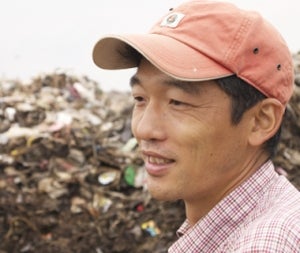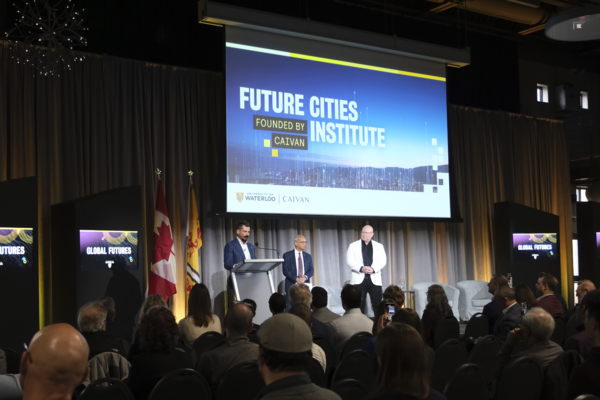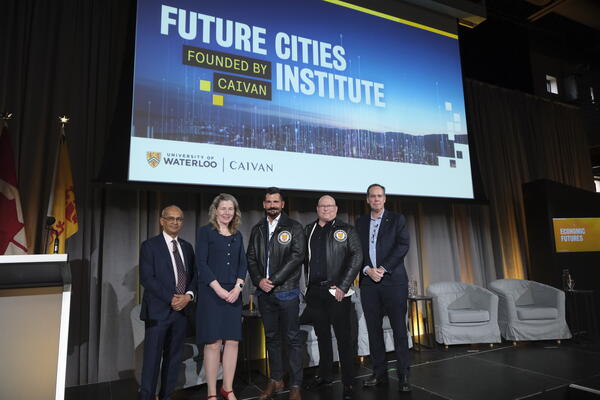
Safely removing asbestos in Rwanda
Waterloo alum supports massive Rwandan project to safely remove asbestos from its public buildings

Waterloo alum supports massive Rwandan project to safely remove asbestos from its public buildings
By Sam Toman Faculty of EnvironmentRwanda is in the midst of a massive effort to remove asbestos from its public buildings and Waterloo alum, Toshikazu Mito, is part of the effort – making sure the environment and workers are protected.
 Mito, a graduate of the Faculty of Environment's Local Economic Development master’s program, originally volunteered to help while living in the east African country. But soon he noticed some people weren’t properly protected and were removing asbestos with their bare hands.
Mito, a graduate of the Faculty of Environment's Local Economic Development master’s program, originally volunteered to help while living in the east African country. But soon he noticed some people weren’t properly protected and were removing asbestos with their bare hands.
According to the World Health Organization, 125 million people worldwide come into contact with asbestos on a daily basis. More than 107,000 of those people die globally each year when their job puts them in prolonged contact with the cancer and lung disease-causing substance.
National action plan for safe asbestos removal
In Rwanda it was mainly used as a roof material. Until the 1980s almost all public buildings were constructed with an asbestos cement roof, explains Mito. The government originally sent a public message out mandating the removal of all asbestos within six months.
Mito, who had previously worked as a government environmental officer in his native Japan, and had studied the practical challenges of development policy with graduate supervisor Paul Parker, had the right experience to help craft a hazardous waste management strategy.
“I saw the asbestos coming in to a landfill without any security and I got worried. Originally I started as a volunteer trying to help this,” says Mito. “But my involvement grew, and then I drafted a national action plan on how to do the work safely.”
The Rwandan government approved the plan and Mito was hired to help oversee the removal process.
Safe asbestos burial sites were created, proper equipment for workers was instituted, and a campaign of public awareness was launched.
The plan, which Mito believes is the only one of its kind in Sub-Saharan Africa, was so successful the Rwandan government has pledged to clear more than a million square metres of asbestos roofing by 2016 at an estimated cost of $US 29 million.

Read more
The Future Cities Institute founded by CAIVAN will bring together leading minds from across sectors to solve the most challenging and urgent issues facing global cities.

Read more
The gift comes from two Waterloo alumni with passion and drive to have transformative impact

Read more
University of Waterloo and leading real estate developer The Caivan Group launch the Future Cities Institute
The University of Waterloo acknowledges that much of our work takes place on the traditional territory of the Neutral, Anishinaabeg and Haudenosaunee peoples. Our main campus is situated on the Haldimand Tract, the land granted to the Six Nations that includes six miles on each side of the Grand River. Our active work toward reconciliation takes place across our campuses through research, learning, teaching, and community building, and is co-ordinated within the Office of Indigenous Relations.